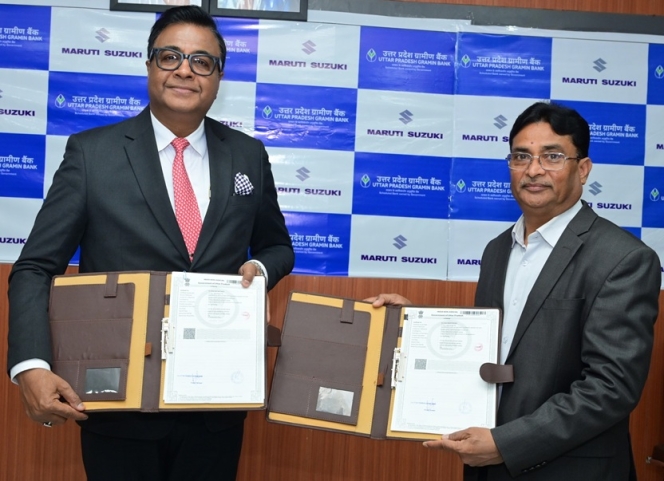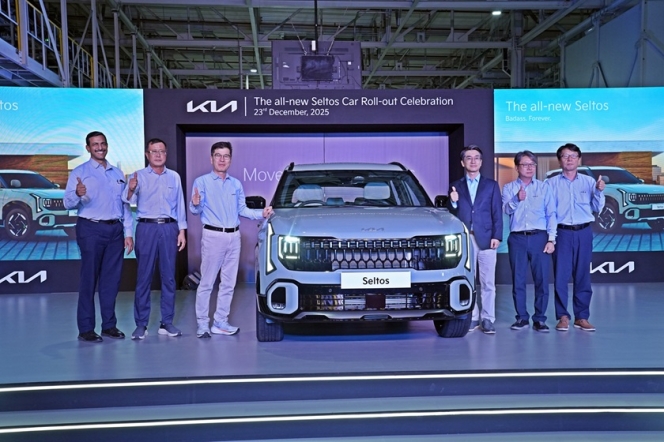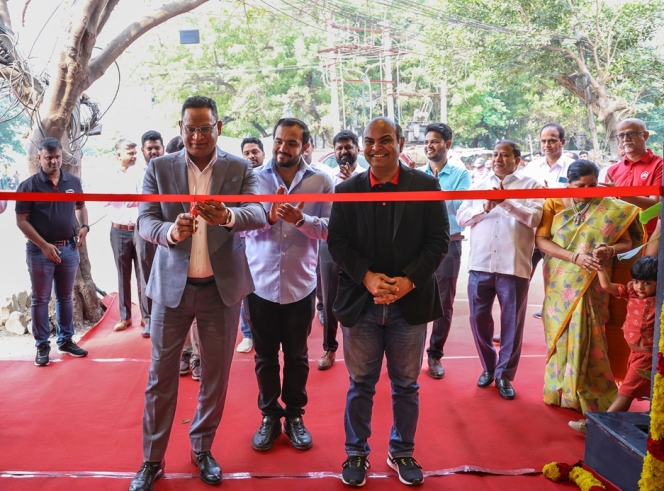
The new modern-day SUVs, in true terms, are nothing more than enhanced cars. They mostly offer better ground clearance, and some even offer an all-wheel-drive system. But you can’t think of doing serious off-roading with them as they are simply not made for that; at best they can blaze through dirt or a gravel track. Well, Jeep has decided to bring some seriousness to the SUV segment by launching one of the most iconic off-roaders in the world, the Wrangler. Jeep India has started assembling it at FCA’s Ranjangaon manufacturing plant near Pune and has become only the second plant in the world to roll out this 4x4 after the Toledo factory in Ohio, USA. The Wrangler is available in two versions—the Unlimited and the Rubicon. The former is priced at INR 5,390,000 and the latter at INR 5,790,000, both ex-showroom India. The new completely knocked down unit (CKD) is now almost INR 1,000,000 cheaper than the previous completely built unit (CBU) versions.
 Commenting on the launch of the locally assembled Wrangler, Dr Partha Datta, Jeep India Managing Director, said, “Indian customers have always desired the legendary Jeep Wrangler, and I am pleased that today we are able to bring this to them, assembled in India. We have extended our points of sale and service for the locally assembled Wrangler to 26 across the country. I’m also happy to announce that we have introduced a MOPAR-original suite of over 120 Wrangler accessories and value packs which customers can order at our dealerships.”
Commenting on the launch of the locally assembled Wrangler, Dr Partha Datta, Jeep India Managing Director, said, “Indian customers have always desired the legendary Jeep Wrangler, and I am pleased that today we are able to bring this to them, assembled in India. We have extended our points of sale and service for the locally assembled Wrangler to 26 across the country. I’m also happy to announce that we have introduced a MOPAR-original suite of over 120 Wrangler accessories and value packs which customers can order at our dealerships.”
Dr Datta added, “Jeep Wrangler’s capability is unmatched because our engineers always have and continue to test and improve our 4x4 technology to make it a global benchmark. This capability is complemented with a timeless design, modern comforts, the latest in infotainment technology and open-air freedom.”
The Wrangler has a colossal presence with its typical squarish design, the classic round headlamps, which are now all-LED, the imposing seven-slate front grille, raised wheel arches housing daytime running lights (DRLs) along with LED indicators and, of course, the solid-looking chunky bumper with LED front foglamps. The Wrangler is only available as a five-seater in India, but it comes in both hardtop and open-roof options.
Both the variants are powered by a 2-litre 4-cylinder turbocharged petrol engine that has an output of 265 bhp at 5,150 rpm and torque of 400 Nm at 3,000 rpm. It comes standard with an 8-speed torque converter automatic transmission.
Wrangler Rubicon
The top variant, the Rubicon gets state-of-the-art RockTrac Full Time 4x4 technology. This sophisticated system is operated by an electronic clutch which engages and disengages automatically depending on the amount of traction required. With a mechanical shifter, the gear range can be changed from 2H to 4L, 4H Auto and Part-Time 4L. 4H Part-Time and 4L modes. The Rubicon gets a Dana 44 front axle, which is ideal for off-roading due to its increased thickness of the axle tube, making it rigid and durable. To ensure that off-road trails don’t spring a nasty surprise at the Rubicon, Jeep has also installed TruLok electric front- and rear-axle lockers to neutralise any extreme condition.
The Front Sway Bar in the Rubicon can be electronically disconnected, allowing the front suspension to travel up to an additional 30 percent. With a press of a button, the Offroad+ feature lets the Rubicon adapt to different terrains by making adjustments to the throttle, Selec-Speed Control which uses hill-ascent and hill-descent control, traction control and transmission shift mode. It also sports a crawl ratio of 77:1 with a 4:1 low range ratio. The Rubicon gets 17-inch alloy wheels for extreme off-roading conditions and thick gauge boron steel underbody skid plates to protect its underbody.
 Wrangler Unlimited
Wrangler Unlimited
The Unlimited is a capable off-roader and can tackle the urban jungle as well.
Equipped with the Selec-Tran 4x4 system, the Wrangler Unlimited can automatically switch from 2WD to 4WD depending on the requirement of the conditions. It also sends power to the wheels with the optimum traction to overcome challenging driving situations. Like the Rubicon, it also comes with the Smart Lock feature for constant 4WD mode when needed. The Unlimited version comes with 18-inch aluminium alloys with all-season tyres.
The Rubicon boasts a ground clearance of 217 mm, while the Unlimited offers 214 mm. While both the variants have the same water wading capability of 760 mm (at 8 km/h), approach and departure angles at 36 degrees and 21 degrees, but Rubicon’s break-over angle is one degree superior to the Unlimited at 21 degrees.
Both the Wrangler models offer an array of features like an 8.4- inch touchscreen that supports both Apple CarPlay and Android Auto, a 7-inch multi-information display in the instrument cluster that reads out active safety and security features, vehicle speed, navigation, radio information as well as full-framed removable doors, a three-piece modular hardtop and a fold-flat front windshield. Both the models come equipped with two USB ports on the dashboard, another one in the centre armrest and additional ports for rear passengers. For additional practicality and safety, both the glove box and centre console are lockable.
In India, the Wrangler’s direct competition is the Land Rover Defender, which is available in both petrol and diesel and is priced from INR 7,657,000 lakhs to INR 11,200,000, ex-showroom India. (MT)
Citroen India Delivers 51 C3 CNG Vehicles To Luthra Group
- By MT Bureau
- December 24, 2025
Citroen India, in partnership with its dealership La Maison Nanavati, has completed the handover of 51 Citroen C3 CNG vehicles to the Luthra Group. The ceremony took place at the Luthra Group’s headquarters in Surat.
The delivery is part of Citroen's strategy to expand its presence in tier-II and tier-III markets by providing mobility solutions to businesses and individuals.
The Citroen C3 CNG is designed for high-usage environments and daily commutes. The model includes several features tailored for the Indian market, integration of a factory-fitted CNG kit to manage running costs. A suspension system tuned specifically for local road conditions. Provisions for cabin space and air-conditioning systems designed for high-ambient temperatures.
The handover to Luthra Group represents the brand's focus on cost-efficient transportation. By targeting the regional business sector, Citroen India aims to strengthen its footprint in Gujarat and the broader Indian mobility market.
The C3 CNG is positioned as a solution for users requiring reliability and low operating expenses without compromising on ride comfort.
Maruti Suzuki India Partners Uttar Pradesh Gramin Bank For Retail Financing
- By MT Bureau
- December 24, 2025

Maruti Suzuki India has signed a Memorandum of Understanding (MoU) with Uttar Pradesh Gramin Bank, a regional rural bank, for vehicle retail financing partnership on new cars, pre-owned vehicles and commercial vehicles.
This collaboration marks the 50th retail finance partner for Maruti Suzuki India. The partnership is intended to use the bank’s network to provide credit options to a range of customer profiles, particularly in rural and semi-urban regions.
The partnership aims to increase the accessibility of Maruti Suzuki products through, tailored finance schemes designed for rural and regional customers.
Partho Banerjee, Senior Executive Officer, Marketing & Sales, Maruti Suzuki India, said, “Our partnership with Uttar Pradesh Gramin Bank marks a significant milestone as we onboard our 50th retail finance partner. This reinforces our commitment to making car ownership simpler and more affordable for customers across India. By expanding our reach through this strategic alliance, we aim to empower buyers with competitive, customer-friendly financing solutions that enhance the overall purchase experience. We remain focused on delivering seamless, tailored finance options, and this collaboration strengthens our vision of providing the Joy of Mobility to aspiring Indian consumers.”
Yadav S. Thakur, Chairman, Uttar Pradesh Gramin Bank, said, “At Uttar Pradesh Gramin Bank, empowering customer aspirations is at the heart of everything we do. Our partnership with Maruti Suzuki, a leader in the automotive industry, is a strategic step towards enhancing our service offerings and delivering greater value to our customers. This collaboration aligns with our 'Customer-First' mission, enabling us to provide accessible and affordable vehicle financing solutions. We look forward to helping more individuals and families across the country realise their dream of owning a Maruti Suzuki vehicle.”
Kia India Commences Production Of New Seltos In Anantapur
- By MT Bureau
- December 23, 2025

Kia India has started production of the latest generation Seltos at its manufacturing facility in Anantapur. The company has confirmed that prices for the mid-SUV will be announced on 2 January 2026.
The Anantapur plant, established in 2019, serves as a hub for both the Indian domestic market and international exports. The facility uses automation and a local workforce to manufacture the Seltos, which was the first model produced by the company in India.
The new model is built on Kia’s K3 platform, which has been engineered to increase structural rigidity and improve suspension damping. The vehicle has grown in size compared to its predecessor to increase cabin space and stability. It has 4,460 mm of length, 1,830 mm of width and a wheelbase of 2,690 mm.
The exterior design follows the ‘Opposites United’ philosophy, featuring a ‘Digital Tiger Face,’ LED projection headlamps, and alloy wheels with neon brake callipers.
The vehicle integrates several digital interfaces and driver assistance systems. It features an upgraded Kia Connect 2.0 suite with over-the-air (OTA) software updates and a proximity unlock function.
In terms of safety, it gets 24 features as standard, while ADAS Level 2 offers 21 autonomous features to assist the driver. The Kia Seltos SUV comes with three engine options – 1.5-litre Petrol producing 115 PS of power and 144 Nm of torque, 1.5 T-GDI Petrol producing 160 PS of power and 253 Nm of torque and a 1.5-litre diesel engine producing 116 PS of power and 250 Nm of torque.
Transmission choices include a 6-speed manual (6MT), intelligent manual (6iMT), IVT, 7-speed dual-clutch (7DCT) and a 6-speed automatic (6AT). The model will be sold in four trims – HTE, HTK, HTX and GTX – with additional option variants and an X-Line styling pack.
Gwanggu Lee, Managing Director & CEO, Kia India, said, “The roll-out of the All-New Kia Seltos marks a proud milestone for Kia India. Seltos has long set benchmarks in the mid-SUV segment, and this new generation represents a bigger, bolder, and more progressive evolution shaped by insights from Indian customers. With production now underway at our Anantapur facility, our teams are fully geared to ensure customers can take delivery of their all-new Seltos without long waiting periods. We are confident the all-new Seltos will once again redefine expectations in the segment and strengthen Kia’s leadership in India."
“The new Seltos looks fantastic. The Anantapur team, together with our supplier partners, have done an outstanding job in delivering our customers a great looking, significantly bigger, technologically progressive and safe vehicle with impressive functionality and connectivity,” he said.
- Citroen India
- Jeep
- Stellantis
- Citroen 2.0
- Shailesh Hazela
- Kumar Priyesh
- Sree Venkata Teja Kethineni
- VTK Automobiles
Citroen India Opens 126th Outlet In Chennai Under Citroen 2.0 Strategy
- By MT Bureau
- December 23, 2025

Stellantis-owned French automotive brand Citroen India has inaugurated its 126th point of sales and service (POS&S) facility in Chennai, continuing the expansion of its network under the ‘Citroen 2.0 – Shift Into The New’ strategy.
The new 3S (Sales, Service and Spares) facility is located at Chitlapakkam, near Chrompet. It is an extension of the partnership with VTK Automobiles, which now operates five Citroen touchpoints in the city. The outlet functions as a ‘Stellantis Brand House,’ allowing customers to access both Citroen and Jeep brands within a single space.
Since the announcement of the Citroen 2.0 strategy, the brand has increased its network by 48.6 percent. Over the last six months, the company added 43 points of sale through its network expansion programmes. Citroen expects to reach a total of 135 outlets by the end of the year, with further operations planned for the north, west, and east of India.
The strategy focuses on several pillars – deepening the domestic supply chain for India-centric products. Expanding the dealer footprint into Tier 2 and Tier 3 locations. Using digital tools and unified spaces for sales and aftersales services.
Shailesh Hazela, CEO and Managing Director, Stellantis India, said, “The expansion of Stellantis network further with VTK dealership in Chennai marks another important step in Citroen and Jeep India’s network growth strategy. Chennai is a key market for us, and this upgraded facility will enable us to serve our customers better with a seamless sales and ownership experience. Aligned with our Citroen 2.0 strategy, we remain committed to strengthening our dealer partnerships and building a robust, customer-centric network across the country.”
Kumar Priyesh, Director Automotive Brands, Stellantis India, said, “We have grown our network by almost 48.6 percent since we announced the Citroen 2.0 strategy and have been able to expand our operations in different parts of country: adding tier 2/3 locations while further strengthening in Metro/ Tier 1 cities. Through project Visitar, Network Expansion Program and expansion in new geographies we added over 43 POS in the last 6 months and are already in advanced stages to start additional operations in North, West and Eastern parts of the country and expected to close the year with 135 POS for Citroen.”
Sree Venkata Teja Kethineni, Dealer Principal, VTK Automobiles, said, “We’re happy to partner to this pivotal shift in automotive retail, proudly representing Jeep and Citroen. Our dual-brand strategy empowers us to deliver a truly elevated and distinctive experience – whether customers seek rugged performance or refined sophistication. With passion, professionalism and personalised care at the core, our team is committed to exceeding expectations and upholding the global standards these iconic brands represent.”
The facility includes a service centre equipped with diagnostics and digital tools. Staff members are trained across both Jeep and Citroen product lines to provide technical support and product information.






Comments (0)
ADD COMMENT